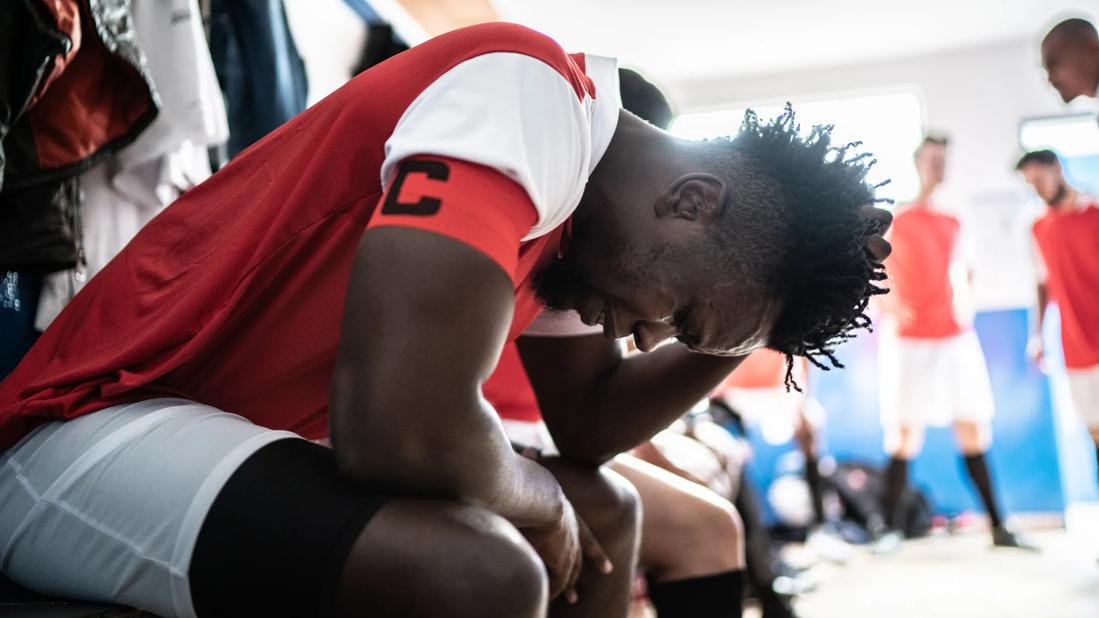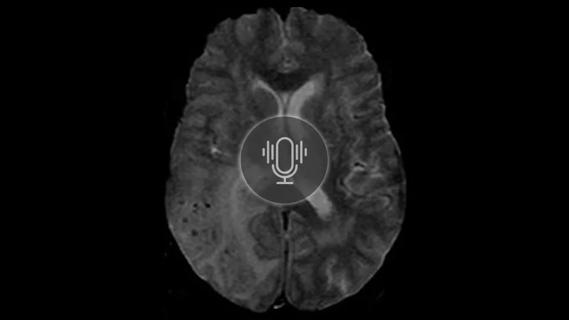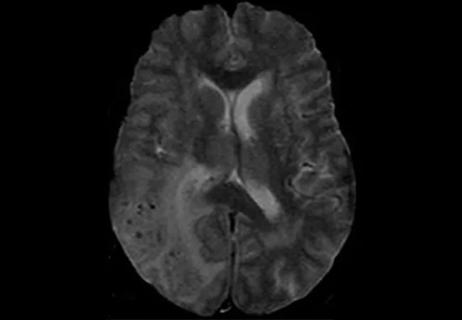Exploring new tools and techniques to improve the diagnosis and treatment of concussions.

The heightened attention on concussions over the past few decades has led to an increased focus on refining diagnosis and management processes. Recent updates in concussion management, particularly the introduction of the Sport Concussion Office Assessment Tool 6 (SCOAT6™) and the updates of the Sport Concussion Assessment Tool 6 (SCAT6™) and Concussion Recognition Tool (CRT6™), have modified the approach to diagnosing and treating these injuries. These tools emphasize a more comprehensive assessment, including vestibular ocular movements and neuropsychological testing, to ensure thorough evaluation and an effective management plan. However, strong and consistent communication across all levels of concussion care remains a major priority.
Advertisement
Cleveland Clinic is a non-profit academic medical center. Advertising on our site helps support our mission. We do not endorse non-Cleveland Clinic products or services. Policy
“Concussions are a significant concern in sports medicine, and they affect athletes of all ages and disciplines,” says Marie Schaefer, MD, a Cleveland Clinic Sports Medicine physician. “While we’re continuing to learn more about how to manage them, we’ve come a long way since the days of simply telling patients to stay in a dark room for 72 hours. One of the things that the last Amsterdam Consensus Statement on Concussions emphasizes is incorporating the SCOAT6™ into in-office concussion management and placing more focus on vestibular ocular motor screens and neurocognitive testing to get a true multimodal assessment.”
The SCAT6™ tool is primarily used to identify a suspected concussion within the first 72 hours of an injury. Conversely, the SCOAT6™ tool is typically used in a clinical setting after the first 72 hours. It provides a more detailed assessment of a concussion in the days and weeks following the injury. If the SCAT6™ was used prior to a SCOAT6™ evaluation, the latter can be used to compare results and track progress.
“Most patients who are diagnosed with a concussion will seek out their primary care physician or pediatrician first,” explains Dr. Schaefer. “The SCOAT6™ helps standardize care among specialists who may not see patients with concussions on a daily basis, and it helps ensure that they’re being thorough in their evaluations. Concussions are associated with so many different symptoms, and no two concussions are alike in how a patient presents or even how their recovery process looks. So, standardized and thorough care is important when you’re treating something as individualized as concussions.”
Advertisement
Dr. Schaefer says that instead of taking a purely symptom-based approach based on patient reporting, Cleveland Clinic specialists are taking a more holistic approach and considering additional factors associated with concussions that hadn’t necessarily been emphasized previously, such as dysautonomia, mood symptoms and learning and concentration difficulties.
“The SCOAT6™ also places an even stronger focus on patient history, including previous concussion recovery from those concussions, along with a history of headache or migraine disorders,” says Dr. Schaefer. “We know that concussions can unroof or put a magnifying glass on problems that may have been small initially but become bigger with the kind of trauma from a concussion. These include things like anxiety, depression or learning disabilities. We always do a physical exam to look at orthostatic vital signs, along with a neurological exam and gait testing. But the SCOAT6™ adds a lot more emphasis on the vestibular and cervical symptoms, like vestibular ocular motor screening, which we find can be a little bit more clinically informative in guiding our treatment plan.”
One of the additional benefits of more testing is that it leads to more data. Dr. Schaefer says that one of the most challenging things both for her and her patients is that concussions and recovery are extremely individualized. “But as we learn more about concussions and how they affect patients, we can uncover more insights and generalities that can give us a better idea of optimal treatment approaches and recovery timelines,” she explains.
Advertisement
She continues, “For example, we know that females tend to have a greater symptom severity than males, and that the higher the symptom burden at the beginning of a concussion, the longer it takes to improve. As was emphasized in the Amsterdam consensus, we know that early exercise, even with symptoms present, in the first 24-48 hours can help decrease recovery time too.”
Dr. Schaefer says that one of the more recent and impactful changes with management has been vestibular therapy. Patients who report dizziness at the beginning or have a lot of neck involvement tend to have more concussions that take longer to recover from, but earlier vestibular therapy can result in better outcomes.
“We’ve found that the neck is really a huge player in concussion management,” she says. “We’ve had patients who fall without actually hitting their head, but they sustained a whiplash-type injury to their neck that causes a concussion that takes months to recover from.”
Part of what’s involved with the shift toward vestibular therapy is placing more value on certain types of tests. Dr. Schaefer says that during Cleveland Clinic’s modified vestibular/ocular motor screen (VOMS) testing, her team tries to quantify a patient’s symptoms.
“We have the athletes score on a zero to 10 scale what their headache pain is, what their head pressure is, their dizziness, and go through all of those symptoms,” says Dr. Schaefer. “Then we’ll put them through a series of tests to see if their symptoms increase, which allows us to categorize their symptoms and come up with a management plan to help speed up their recovery.”
Advertisement
Among the tests Dr. Schaefer uses are the smooth pursuit test, which looks at eye tracking, since a concussion can cause eye deviation or nystagmus. The vestibular ocular reflex test is also used to track eye movements as well as neck motion. The last part is saccades testing to track a patient’s ability to move their eyes back and forth between different points.
“We always do a few reps for all of the testing because a patient may be fine for the first couple reps, but often the patient will start to fatigue in real time,” says Dr. Schaefer. “I always do those three tests with every patient I see. You can have a pediatric patient who comes in who had a head injury who insists they feel fine. You put them through saccades, they're looking back and forth at your fingers, and all of a sudden, their symptoms come rushing back. So, these tests help us pick up on some of the symptoms that are harder to see in a patient.”
It's also important for specialists to remember to contextualize these tests for each patient. For example, older athletes typically have faster eye tracking than younger athletes. The athlete’s sport can also impact their testing ability and results — gymnasts typically have greater balance and should be able to walk in a straight line even when concussed. Lacrosse and e-sport athletes have incredibly fast eye tracking at baseline, so even when they’re concussed, their eye tracking numbers may still be higher than athletes in other sports.
“This is why baseline testing is so important,” says Dr. Schaefer. “It’s also important to remember that these younger athletes are still developing, so we should really be updating an athlete’s baseline numbers annually as they become more developmentally mature.”
Advertisement
While much of the care Dr. Schaefer provides is focused on the management side, concussion diagnosis typically falls to athletic trainers. For that reason, Cleveland Clinic works with many local schools across Northeast Ohio to help them stay current with new protocols and care recommendations.
“A lot of the concussions we see are sent to us from athletic trainers that are from schools Cleveland Clinic has partnered with,” says Dr. Schaefer. “Jason Cruickshank, AT, our athletic trainer coordinator with our Concussion Center, is the backbone of our concussion outreach and education. He helps make sure that the athletic trainers at all those schools know exactly what to do, and with our graduated return to play progressions, they know what’s required before an athlete can return to play. If an athlete has a suspected concussion, those athletic trainers know to reach out to Jason, and he’ll work with our physicians to get that patient in as soon as possible.”
Beyond communication with schools and their athletic trainers, Dr. Schaefer says another piece of the equation is communication with athletes. Through Cleveland Clinic’s MyChart, athletes can log on each day to complete questionnaires that track symptoms and progress to help physicians track their progress on a more micro level.
Dr. Schaefer believes this model of concierge management of concussions is incredibly beneficial for athletes.
“The best way to describe it is that we have a coordinated care approach,” she explains. “As soon as an athlete gets identified with a sports-related concussion, they work with our athletic training coordinator team to see a physician within a week of their injury. Our physician team also uses a care path with the same office notes, patient education information and treatment options. We can get athletes quickly to our physical therapists who do vestibular therapy and our community athletic trainers who use a specified graduated return to learn and return to play protocol. So, the fact that everyone at all levels of care is working from the same playbook to get patients seen quickly and treated is very unique, and it’s how I believe medicine should be practiced.”
Advertisement

Training, tools and resources lead to safer, more compassionate care

Cleveland Clinic researchers collaborate with Microsoft to create a product ready for the field

New research sheds light on a potentially devastating condition that is reversible when properly managed

Vigilant MRI evaluation needed for prompt care of potentially reversible inflammation, study finds

Machine learning study associates discrete neuropsychological testing profiles with neurodegeneration

Why shifting away from delayed repairs in high-risk athletes could prevent long-term instability and improve outcomes

Multidisciplinary care can make arthroplasty a safe option even for patients with low ejection fraction

Percutaneous stabilization can increase mobility without disrupting cancer treatment